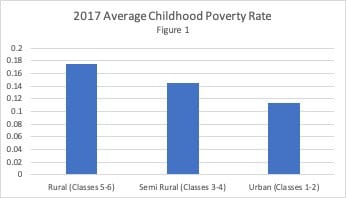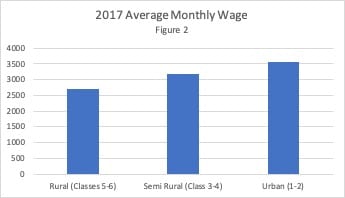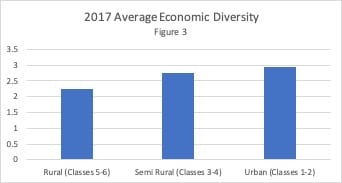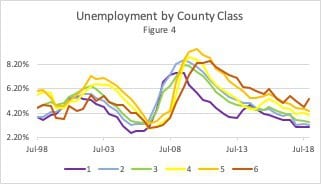
Written by Zach Schofield
March 6, 2019
Comment presented by Zach Schofield on March 5, 2019, in support of HB 296 1st Substitute – Rural Online Working Hubs Amendments, before the Senate Economic Development and Workforce Services Committee of the Utah Legislature. The bill, which was passed out by the committee with a favorable recommendation, will be placed on the Senate 2nd Reading Calendar.
Rural communities experience economic challenges that the rest of the state doesn’t face. People are more likely to live in poverty, more likely to be unemployed, and likely to earn a lower salary. HB 296 wisely tackles these issues by addressing the need for economic infrastructure in rural communities in a digital age. Rather than a handout, or haphazard tax breaks, this kind of economic development policy promotes self-reliance among communities facing poverty, mobilizes the free market and benefits taxpayers.


*Data Source: Utah Department of Workforce Services
Figures one and two are graphs of the childhood poverty rate and average wage for all counties in Utah broken down by county class. The average poverty rate in rural counties is 17.5 percent, or about 1 in every 6 children – a rate 55 percent higher than in urban counties. This might later affect that child’s ability to perform in school and go on to live a life characterized by prosperity and hope. Data also suggest that those living in rural communities simply earn less than urban dwellers. While some of this difference is offset by lower cost of living, those living outside the urban core don’t have the same opportunities to provide for their needs, save for retirement, or prepare their children for the future.
Rural communities are also less economically diverse. Economic diversity provides a multitude of benefits to a region, like faster recovery after recession[1]. Figure three compares diversity using a Shannon-Weaver index, which is calculated by comparing the percentage of jobs that are carried in each industry. An economy where jobs are concentrated in fewer industries has a lower index number.


*Data Source: Utah Department of Workforce Services
Rural communities are disproportionately concentrated in fewer industries, while urban communities enjoy higher diversification. If there are shocks in core rural industries like mining or tourism, it is likely that it will have a stronger impact on the health of the region in a rural community than in an urban one.
These economic disparities aren’t a recent phenomenon. Figure four shows unemployment by county class from 1998 to 2018. During both the dot-com bubble in the early 2000s and the financial crisis of 2008, rural communities reached unemployment levels far exceeding urban communities, and they took longer to recover. As Utah climbed out of the 2008 recession, urban counties reached near pre-recession unemployment levels within 8-10 years. Rural communities still have not returned to the economic prosperity enjoyed before the recession.
What should this mean to policymakers? This legislative body has the opportunity to enable the alleviation of poverty through infrastructure development. By enabling rural access to remote jobs, workers throughout the state will be able to strengthen their families and local communities.
An item worth noting is the definition of entity on line 45 of the first substitute which now includes private companies, including for-profit companies. In our view, this opens the possibility for grant money to go toward projects that exclusively serve one company’s employees rather than providing community-wide access to the online economy. While it’s difficult to foresee to what extent this may become an issue, we recommend that those who oversee the use of these funds ensure the money is being used according to the spirit of this law in the future.
Infrastructure-enabled access to employment opportunities will assist in reducing poverty, increasing wages, and providing greater stability and flexibility to the communities that need it most. For these reasons we urge your support of HB 296.
More Insights
Read More
What you need to know about the upcoming state party conventions
The two major political parties are about to hold their state conventions. Here’s what you need to know.
Here’s why the First Amendment’s religion clauses are not in conflict
Some suggest there is a tension between protection for the free exercise of religion and the prohibition on the establishment of religion. But a better take is to see the two clauses as congruent.
Is California’s minimum wage hike a mistake?
Is raising the minimum wage a good tool to help low-income workers achieve upward mobility? That’s the key question at the heart of the debate over California’s new $20 an hour minimum wage law for fast food workers.


